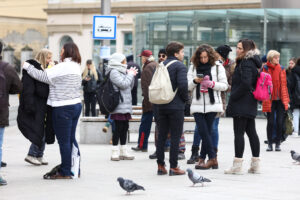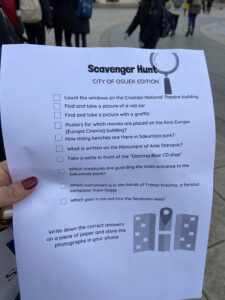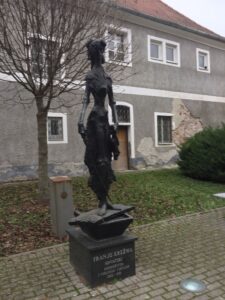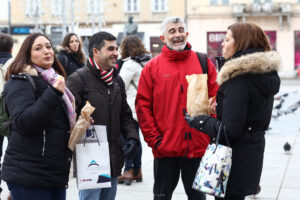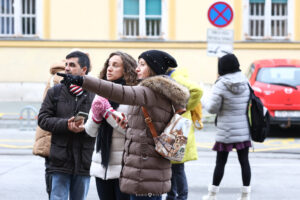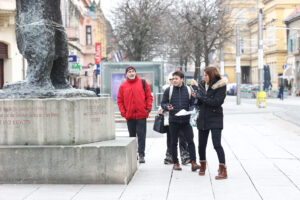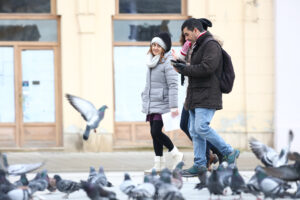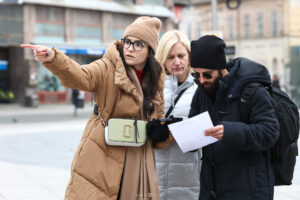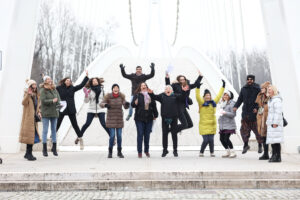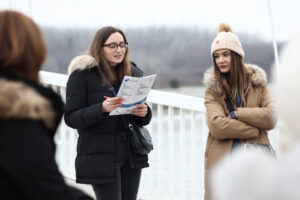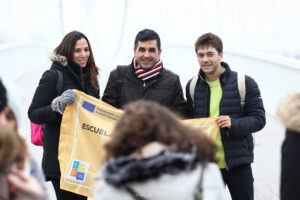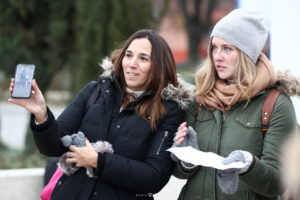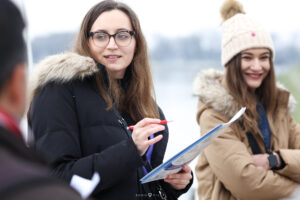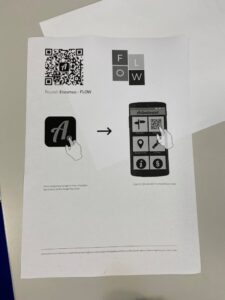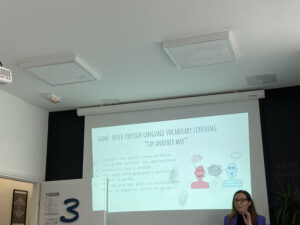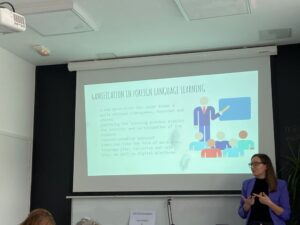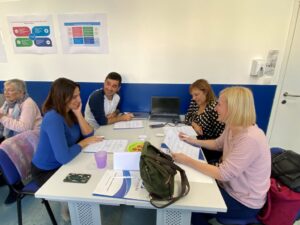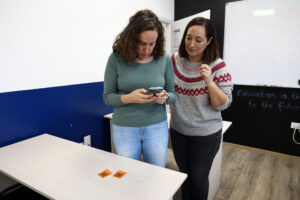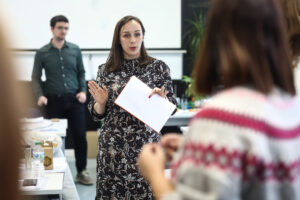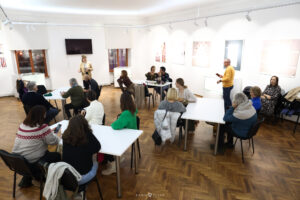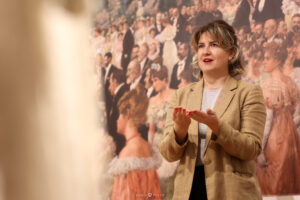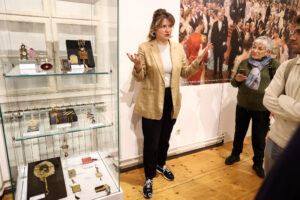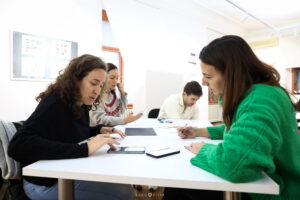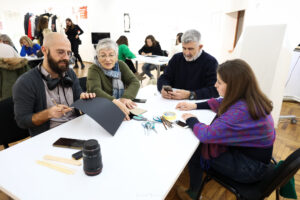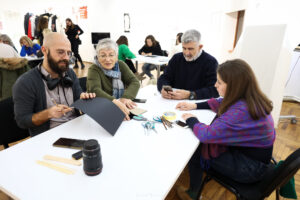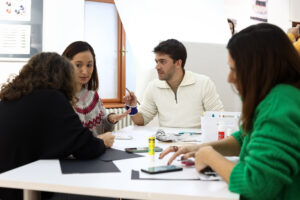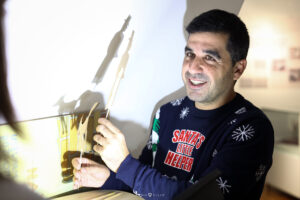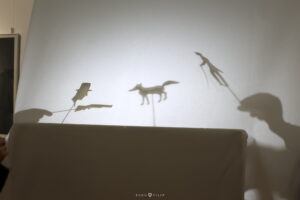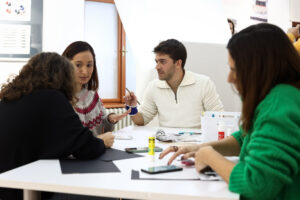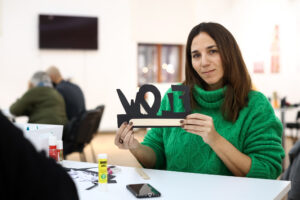FLOW IN GAMIFICATION, OSIJEK, CROATIA, DECEMBER 12TH-16TH 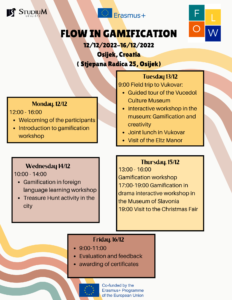
fter these introductory activities, we learned about the use of gamification in educational settings, reviewing the difference between playing games and gamification. The latter involves the use of games in contexts where you don’t usually expect them, such as in an educational setting. Therefore, the use of games becomes one more tool towards the achievement of learning objectives. The implementation of gamification leads to an increase in the intrinsic motivation for learning while creating a better classroom atmosphere.
We also took part in what was called fruit salad, that is to say, a version of the traditional musical chairs game. Finally, we were presented with two more cases of gamification in a classroom setting using the application Genial.ly.
TUESDAY 13th
This day we visited the Vučedol Culture Museum and Archaeological Site in Vukovar where we learned about the prehistoric culture of the Eneolithic period (3000-2500 BC.). As mentioned on the Culture and Creativity website by the European Commission, this place “bears testimony to one of the earliest Indo-European cultures on the right bank of the Danube River in eastern Croatia. Its Museum and Archaeological Site bear testimony to one of the earliest Neolithic Indo-European cultures along the Danube basin, leading the way to innovations such as four-wheel carriages, saws and ca


After enjoying a joint lunch, we visited the Eltz Manor at Vukovar for a “gamification on ice” experience. This 18th century Baroque palace appears on the back of the 20 kuna banknotes and was the perfect background for a fun evening when we had the opportunity to practice or be introduced to ice skating, immersing ourselves in the lifestyle of the locals in this part of Europe where the practice of winter sports is so popular.
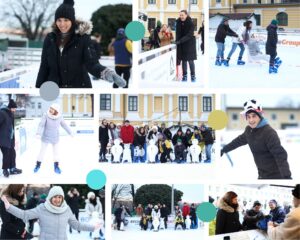
WEDNESDAY 14th
On Wednesday, we started the workshop with a game which consists of walking around a room. When the person in charge of leading the activity says “stop” the people walking need to continue walking. When they say “walk”, then, they need to stop. The idea is to do the opposite of what you are being told to do. To these two commands, two more were added: “name” and “clap”. Again, when we heard “name” we had to clap and when we heard “clap” we had to say our name. Another fun idea for our classes…
After that, we used the website educaplay to create a game of Froggy Jumps. In this type of online game, you need to answer different questions and that way help a frog jump from one leaf to another until it reaches the shore. It is another way to combine fun and learning. We also played the game Say it Another Way, a version of the famous Taboo game, where you need to explain a word without using the same word or its derivatives.
Continuing with the idea of gamification in the classroom but this time taking it out of the classroom, we moved to the streets of Osijek to take part in a Treasure Hunt activity organized by our host. We were divided into different teams and given some instructions with tasks to get done. These tasks involved moving around the town and took us to the main landmarks of Osijek,, e.g., count the on the Croatian National Theatre Building, which year is carved on the Secession Well?, etc. It was a great way to get to know the city better through the incorporation of gamification. This type of game adds the element of competition to the activity which helps to increase motivation in people who want to excel and be the winner. Congratulations to Răzvan Marchiș from ACTA, Katia Lang from STEP, Necla Turan from EFEM Akdeniz, Aleksandra Ristić from DANTE and Eva Kořánová from Educa for being the winners!!
THURSDAY 15th
To start the lesson, and as a kind of icebreaker activity, we played a version of the game known as Never Have I Ever. It is an entertaining and easy way to get to know other people better. In this case, we formed a circle and a person stood in the middle, inside the circle. This person had to say something about them, e.g., I have three dogs, and those for whom the statement was also true had to hug this person. The game continued until everyone had said a statement about themselves.
After this initial activity and continuing with the idea of treasure or scavenger hunts, we practiced with the website/application Actionbound.
The evening continued with an activity which consisted of sitting back to back with another person and describing a picture. Each person needs to draw the picture being described by their partner. There are a few laughs at the end when you check your partner’s painting according to your instructions. After this, we participated in a Croatian lesson in which we learned some basic vocabulary that we put into practice later on when we played Minefield, a game in which a person, with their eyes blindfolded, was guided through a minefield in which some obstacles had been placed. The idea is to reach the end without stepping on any obstacle. It is a great exercise to promote collaboration and team building since the person with their eyes blindfolded depends on their peers’ directions to finish the game satisfactorily. The directions (turn right, turn left, go straight, etc.) were given in Croatian since we had learned them in our brief Croatian lesson, converting it into a good activity to practice giving directions or using commands in a foreign language.
The last part of this busy day of training took us to the Museum of Slavonia for a gamification in drama interactive workshop. Within the facilities of this very interesting museum, we immersed ourselves in a hands-on experience, as we did in the Vučedol Culture Museum and Archaeological Site in Vukovar. Using the tools and materials provided by the museum’s staff, in different groups, we thought of a story and script to tell it to the rest of the audience in the format of a shadow theatre. We designed, cut and glued our figures and performed our “play” in a magical setting while, once again, we learned how motivating and engaging this type of activity can be. The division of tasks among the different members of a team promotes teamwork and the idea of thinking of a story from scratch (we had to think of a story based on the objects that we had seen in one of the rooms at the museum) stimulates creativity.
FRIDAY 16th
This day was dedicated to the concept of Cooperative Learning and how teachers can learn from each other through peer observation and giving feedback that is constructive and conducive to creating a better work environment. Eva Kořánová, from Educa, introduced the concept of Peer Observation and the existence of three methods which can be used in order to provide feedback to our peers once an observation of their teaching/work has been carried out. The idea is to use peer observation, observing other teachers while they teach or do some other type of task, with the purpose of meeting after the observation and providing feedback that can be useful to the person being observed.
The first type of feedback that we saw consists of providing a detailed description of what has been observed without adding any personal opinion, just the facts of what was observed; the second type of feedback is commonly known as a “sandwich” type of feedback. We would provide some positive feedback first, then, we would include some aspects which we think show room for improvement and, finally, we would conclude by mentioning some positive aspects again in order to finish our comments on a positive note. The third type of feedback that we worked on was a type of feedback that implies asking questions to the person being observed about what they think about their performance, what aspects they consider to be OK or which ones need to be worked on, etc.
With this last session, which offered us a great opportunity to share ideas and suggestions for implementing best practices including peer observation in our organizations, we finished this well-organized and formative workshop offered by Učilište Studium in Osijek, Croatia.
